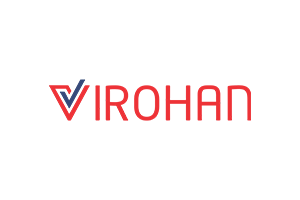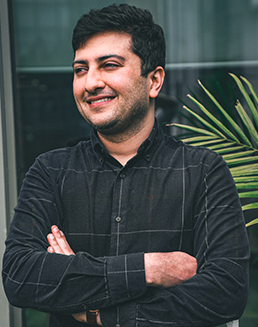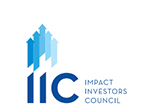|
Enterprise Showcase
Dialogue with Kunaal Dudeja, CEO and Co-Founder, Virohan
|
|

1 Virohan has done remarkable work in addressing skill gaps in the healthcare sector and empowering professionals to meet industry demands. Could you share an overview of the programs you offer and, in your view, which skills—conceptual knowledge, technical training, or soft skills—are most lacking among healthcare professionals? How does your curriculum address these challenges?
|
In line with the WHO’s report on “Addressing Health Workers Shortage,” healthcare systems worldwide are facing a critical mismatch between their available workforce and the growing needs of an aging population. Inefficiencies in service delivery frequently stem from the shortage of well-trained Allied Healthcare professionals - roles that comprise about 70% of the total healthcare workforce. While doctors (10–15%) and nurses (20–25%) together form only 30–35% of this workforce, the substantial remainder relies on Allied Health staff to ensure the seamless functioning of healthcare services. Recognizing this glaring gap, Virohan was established to equip the next generation of Allied Healthcare professionals with the necessary skills to address these challenges head-on.
Virohan’s Programs & Pedagogy
We offer 3- and 4-year bachelor’s degree programs designed to produce job-ready graduates in areas like Medical Lab Technology, Radiology & Medical Imaging, Operating & Anesthesia Technology, Optometry, and more. Each program integrates conceptual knowledge, technical proficiency, and soft skills development—vital components for Allied Healthcare roles.
Identifying the Most Lacking Skills
- Patient-Facing Roles: Employers cite soft skills—effective communication, empathy, and teamwork—as the largest gap, followed by technical expertise.
- Non–Patient-Facing Roles: Technical proficiency remains the predominant area needing improvement.
How the Curriculum Addresses These Gaps
- Blended Learning & Microconcepts
- Our curriculum is broken down into microconcepts, each delivered via a video, a corresponding activity, and a quiz.
- Depending on the topic, the activity may involve a group exercise or simulation to build soft skills—such as empathy, communication, and teamwork—or a practical lab session to strengthen technical proficiency.
- 30-20-50 Pedagogy
- The 30–20–50 blend devotes 30% to conceptual knowledge, 20% to soft skills, and 50% to practical, hands-on training.
- This approach ensures students have a strong theoretical grounding, interpersonal capabilities, and the technical acumen to excel in diverse healthcare settings.
- Engaging Classroom Environment
- Our facilitators maintain highly interactive classrooms, ensuring individual attention for every student.
- By fostering a culture of active participation and collaborative problem-solving, students develop confidence in both their professional knowledge and patient-facing demeanors.
- Internships & Real-World Exposure
- 50% of the total degree tenure is dedicated to internships, where students gradually tackle more complex healthcare tasks under the guidance of experienced doctors at one of our 1,100+ healthcare partners.
- These real-life applications sharpen both soft skills—essential for patient-facing roles—and technical proficiency—critical for non–patient-facing specializations.
- Ongoing internship assessments capture learning milestones, ensuring continuous feedback and improvement.
- Proven Outcomes & Alumni Success
- With 8,000+ alumni, Virohan’s practical, skills-focused approach has consistently demonstrated its effectiveness. Our graduates not only meet industry standards but continue to grow and excel across various specializations in the healthcare sector.
By directly addressing the skill gaps highlighted by the WHO—particularly among Allied Healthcare staff - Virohan helps strengthen the healthcare ecosystem. Our programs blend conceptual knowledge, hands-on technical training, and essential soft skills, producing well-rounded professionals ready to meet the industry’s evolving needs, whether they interact directly with patients or work behind the scenes to ensure quality care.
|
2 Your focus on blending classroom learning with digital tools is innovative. Could you share more about how these methods have shaped student outcomes and engagement? What sets this approach apart in the healthcare education space?
|
At Virohan, our blended learning approach leverages technology to transform a traditional classroom into a highly interactive, student-centric environment, which has been instrumental in driving exceptional outcomes and engagement levels. In fact, since 2019, we’ve trained over 8,000 students, with 96% completing their programs on the first attempt (versus an industry average of 62%) and 98% securing jobs within one month of graduation (against a national average of only 24% employment for fresh graduates).
What Sets Us Apart
-
Student-Centric Focus: Freed from preparing lesson plans, facilitators concentrate on guiding and mentoring everyone, ensuring high levels of personal attention.
- Data-Driven Progression: Our algorithmic approach means classes only advance once most learners grasp the current concept, boosting retention and program completion rates.
- Immediate Feedback Loops: The combination of digital quizzing and facilitator oversight fosters a culture of continuous improvement, reducing learning gaps in real time.
- Tailored for Healthcare: Unlike many general e-learning models, our platform and curriculum specifically address the demanding standards of healthcare roles, providing students with the technical and interpersonal competencies they need to excel in patient-facing and non–patient-facing environments.
By merging technology-driven delivery, real-time assessments, and engaging classroom dynamic, Virohan ensures that students not only acquire essential healthcare knowledge but also develop the confidence and practical skills required to flourish in the industry. This innovative blend sets us apart in the healthcare education space, ultimately preparing more qualified professionals to fill the critical gap in Allied Healthcare services.
|
3
Regulations and certifications can often be a challenge in education. How has the formation of the National Council of Allied Health Professional (NCAHP) and other regulatory frameworks impacted your operations? Are there any key lessons or ongoing hurdles in this space?
|
Historically, the formalization of any sector has led to increased aspirations, higher salaries, and more opportunities. The formation & implementation of the NCAHP will achieve the same outcomes, significantly enhancing Virohan's value proposition. The 3 and 4 year degrees offered by Virohan in partnership with universities will serve as the foundation for obtaining formal AHP certification. Private certifications will no longer be valid, which will further strengthen Virohan's model, as all Virohan certifications are co-branded with UGC-accredited universities and are recognized by the government and NCAHP.
Moreover, Virohan's proprietary pedagogy focuses on holistic student development with a significant emphasis on soft skills and practical training, making our graduates highly employable and the preferred choice even among certified AHPs. This approach ensures that Virohan is not only regulatory compliant but also an industry-first preferred partner due to our quality at scale.
Some of the key Impact due to regulations on Virohan are:
a) Formal Certification under the NCAHP Act becomes a ‘must-have’ for becoming an AHP
- Every healthcare establishment, including smaller unorganized hospitals and labs, is now mandated to employ certified Allied Healthcare Professionals (AHPs) in compliance with various healthcare regulations.
- Non-compliant healthcare establishments face license risks and penalties. There is a strong governmental push for the accreditation of these establishments, making the employment of certified AHPs essential. Failure to comply may result in the revocation of NABH/NABL licenses.
- With certification becoming mandatory, Virohan’s programs become indispensable for hospitals needing to hire a trained workforce for various job roles to remain compliant. We anticipate that unorganized employment will be limited to smaller establishments in rural and semi-rural areas.
b) Formalizing the sector will increase awareness, make it more aspirational, and unlock a greater Addressable Market
|
4
Expanding across geographies and scaling quality education are challenging goals to balance. What are the biggest challenges you face in maintaining consistent quality while ensuring healthcare education remains accessible and affordable, and equips students to be job-ready, especially in underserved regions?
|
Expanding high-quality healthcare education across diverse geographies requires a careful balance between consistency, affordability, and job readiness—especially in underserved regions. At Virohan, we tackle these challenges by standardizing every step of the teaching-learning process, from curriculum design to assessment and facilitator training, ensuring that students everywhere receive the same rigorous education.
1. Standardization & Quality Assurance
- We rely on a standardized content delivery framework, comprehensive assessments, and data-driven decision-making to maintain uniform quality across all classrooms.
- Facilitator performance is monitored daily for student engagement, attendance, and pass percentages on quizzes; these metrics guide a Facilitator Growth Plan, providing targeted training to improve instruction or support career advancement.
- In underserved regions where internet connectivity can be spotty, we collaborate with Internet Service Providers to secure reliable wired or satellite connections, ensuring smooth delivery of our blended learning modules.
2. Ensuring Affordability & Accessibility
- To keep education financially accessible, Virohan has built financing partnerships that offer extended repayment terms, easing the immediate cost burden on students.
- Our ‘SureStart’ partnerships with employers guarantee interns a monthly stipend of approximately INR 8,000, significantly offsetting education expenses during practical training.
- These measures enable more students - including those from lower-income or remote areas - to enrol, stay enrolled, and focus on developing essential skills rather than worrying about financial constraints.
3. Job-Readiness & Industry Alignment
- Our standardized curriculum emphasizes both technical and soft skills, ensuring graduates meet the real-world demands of healthcare employers.
- Through a network of 1,100+ employment partners, students gain internship experience and immediate job opportunities upon completion, validating the effectiveness of our model in producing workforce-ready professionals.
By marrying a highly standardized instructional model with strategic regulatory partnerships, reliable infrastructure solutions, and robust financial support, Virohan delivers consistent, affordable, and industry-relevant healthcare education. This holistic approach not only maintains uniform quality but also empowers students, regardless of their location, to secure rewarding careers in the ever-evolving healthcare sector.
|
5
Looking ahead, how do you plan to scale your platforms, and do you wish to explore opportunities beyond healthcare education? What innovations in allied healthcare training do you believe will shape the sector in the coming decade, and how do these align with your vision for diversification and growth?
|
The opportunity in healthcare itself is very large. India needs 4mn+ AHPs as of today which will grow at a 22% CAGR giving strong tailwinds to the business.
Virohan’s first-mover advantage, deep understanding of AHP curriculum and proven learning outcomes position it as the preferred partner for multiple universities aiming to enter the AHP space over the next 5-7 years, and multiple healthcare partners who aim to hire a trained workforce. This will make Virohan the largest player in India, with revenue potential exceeding $1 billion within the country.
In terms of innovation, we foresee advancements such as AI-driven personalized learning, simulation-based training, and competency-based assessments reshaping healthcare training. These align seamlessly with our vision to continuously innovate, scale our platforms, and remain at the forefront of healthcare education.
|
6
Being featured in Forbes Asia's 100 to Watch list is a testament to Virohan’s potential for impact. How do you envision the organization making a lasting impact on India’s healthcare and skill development landscape in the next five to ten years, and what are your most ambitious goals for driving this transformation?
|
Being featured in Forbes Asia’s 100 to Watch underscores Virohan’s commitment to driving meaningful change in India’s healthcare and skill development landscape. Over the next five to ten years, our vision is to train over one million healthcare professionals, broadening access to high-quality education while continually innovating in technology, pedagogy, and industry partnerships.
1. Scaling Through Strategic Alliances
- We will expand our SureStart program to foster stronger industry linkages, ensuring students gain robust internship experiences and secure higher salaries upon graduation.
- By forging deeper alliances with universities and healthcare institutions, we aim to extend our presence into underserved geographies, maintaining our 98% placement rate while reaching a significantly larger student base.
2. AI-Driven Innovation & Integrated Classrooms
- Over the next decade, we plan to deepen our investments in AI and IoT to create truly integrated classrooms—where real-time data on student performance and engagement help facilitators personalize instruction, and students receive an immersive, hands-on experience unmatched in the industry.
3. Ensuring Job-Readiness & Quality
- Our 30-20-50 pedagogy will continue to evolve, blending conceptual knowledge, soft skills, and practical training to produce fully job-ready graduates.
- We track facilitator performance daily—focusing on student engagement, attendance, and first-time pass rates—and use a Facilitator Growth Plan for continuous skill enhancement. Maintaining high instructional quality is essential for meeting our ambitious goal of training one million professionals.
4. Transforming India’s Healthcare Ecosystem
- By systematically addressing the nation’s vast demand for skilled Allied Healthcare Professionals, we aim not only to meet domestic needs but also to strengthen India’s status as a global healthcare hub.
- Through our scalable models, we hope to catalyse sustainable growth in the sector—ultimately impacting millions of lives via improved healthcare delivery.
In pursuing these ambitious goals, Virohan will continue to fuse cutting-edge technology, industry-aligned education, and strategic collaborations—ensuring our graduates are not just employable but become frontrunners in shaping the future of healthcare in India and beyond.
|
|
|

Kunaal Dudeja, CEO and Co-Founder, Virohan
Kunaal Dudeja is the CEO and Co-Founder of Virohan, a platform revolutionizing healthcare education by training Allied Healthcare Professionals (AHPs) to bridge the gap between demand and supply in India’s healthcare sector. Coming from a family of doctors, including his mother, Dr. Mridu Dudeja, a former Dean of Jamia Hamdard University, Kunaal grew up with a deep understanding of the healthcare ecosystem and a passion for creating meaningful impact.
A graduate of SRCC Delhi and NID Ahmedabad, Kunaal brings a unique combination of business acumen and design thinking to his entrepreneurial journey. With over 18 years of experience managing P&L and building strategic partnerships at leading organizations like Arvind Fashion and Genesis Luxury, he has honed his expertise in scaling businesses and driving operational excellence.
At Virohan, Kunaal leverages his diverse background to design scalable and job-oriented healthcare training programs. His leadership has propelled Virohan to become a recognized leader in the healthcare education space, training over 10,000 students and securing partnerships with universities and a network of 1100+ hospitals and labs. With his vision and dedication, Kunaal is transforming healthcare education, empowering students, and contributing to the growth of India’s healthcare industry.
About Virohan
Virohan is an industry-led platform dedicated to training Allied Healthcare Professionals (AHPs), who make up 60% of the healthcare workforce. Our aim is to bridge the gap between industry demand and skilled talent by acquiring, training, co-certifying, and placing students in internships and jobs.
We collaborate with universities to establish Schools of Allied Health within their campuses, delivering standardized, industry-aligned training seamlessly integrated with job placements. Our network of 1100+ hospitals and labs ensures that students transition smoothly into the workforce.
96% of students complete our programs, and 98% secure jobs within a month of graduation. To date, we have successfully trained over 10,000 students. Our proprietary curriculum and innovative training model (Virohan IP) drastically reduce delivery costs to one-sixth of traditional university programs, making high-quality healthcare education more accessible and scalable.
Our university partners benefit from a comprehensive transformation in healthcare education, and our students are empowered with the skills and opportunities they need to thrive in a rapidly growing industry. At Virohan, we’re not just shaping careers; we’re building the future of healthcare in India and beyond.
|
|
About Impact Investors Council:
Impact Investors Council, India (IIC) is a member-based national industry body formed with an
objective to build and strengthen the impact investing eco-system in India. To know more about our work visit https://iiic.in or reach out to secretariat@iiic.in
|
Disclaimer: Data and Information in this newsletter is made available in good faith with the exclusive intention of helping market and ecosystem players, policymakers and the public build a greater
understanding of the Indian impact investing market. The data is collated from sources believed to be reliable and accurate at the time of publication. Readers are urged to exercise independent judgment and diligence in the
usage of this information for any investment decisions
Some of the information provided in this newsletter is supplied by third parties. It is important that all users understand that third party information is not an endorsement of any nature and has been put together with the
sole purpose of benefiting stakeholders.
|
| Unsubscribe |
|
|
|


